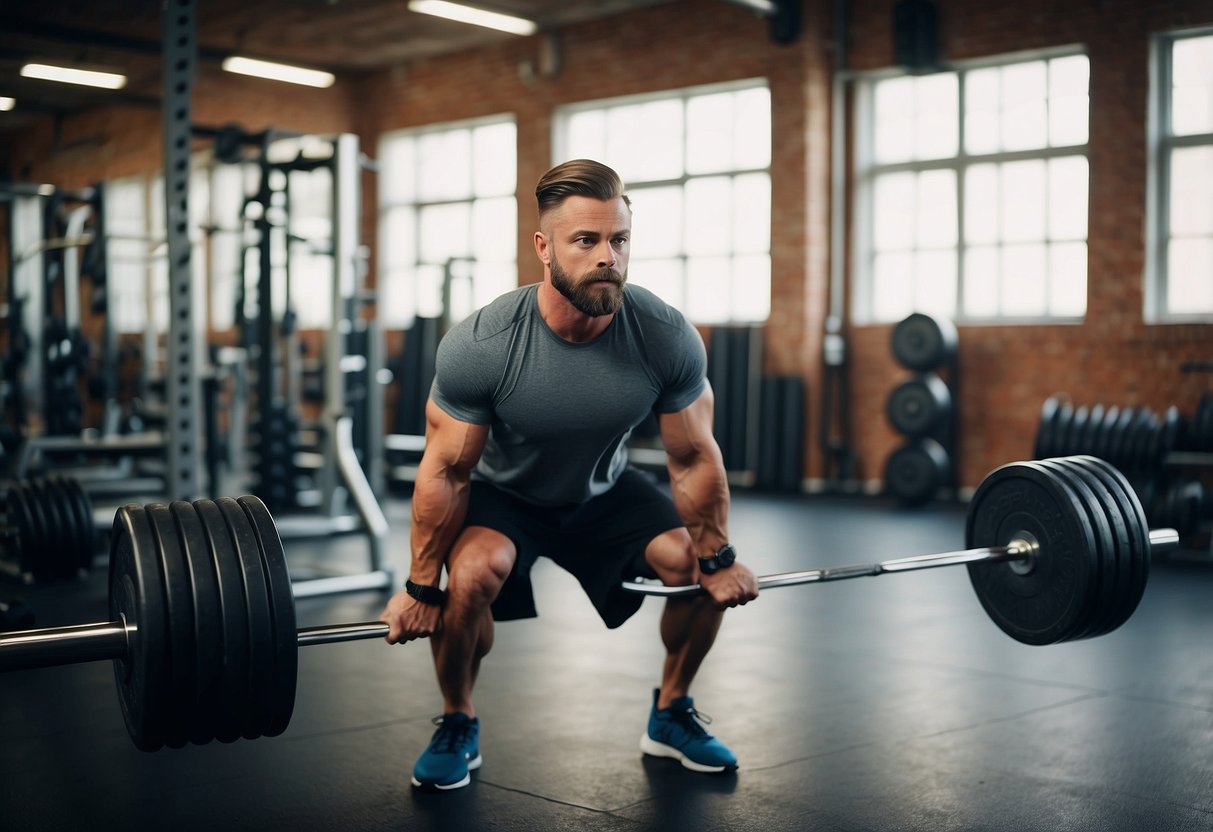Looking to improve your workout routine? Discovering the most effective methods and tips can make a world of difference in reaching your fitness goals. Sometimes, the sheer amount of advice out there can be overwhelming. That’s why focusing on reliable and practical strategies is key.

What are the best workout tips for achieving your fitness goals? From understanding the importance of compound exercises to optimising your nutrition, these tips are designed to help you maximise your results and build a stronger, healthier you. Whether you’re just starting out or looking to refresh your routine, the right approach can lead to significant improvements in your workout efficiency.
Warm-up Thoroughly
Before diving into your workout, it’s crucial to warm up thoroughly. Spending just 5-10 minutes on warm-up exercises can help prevent injuries and improve your overall performance.
Start with dynamic stretches like scorpion stretches and bodyweight squats. These exercises increase blood flow and loosen up your muscles.
Practices like the Overhead Stretch can help you feel more energised.
Finally, try exercises such as bird dog for stability and core strength. These are simple yet effective to get you ready for the main workout.
Focus on Compound Movements
When you hit the gym, compound exercises are your best friend. These moves, like squats and deadlifts, involve multiple joints and muscle groups. You get more bang for your buck with compound movements because they build strength and muscle efficiently.
Think about the bench press. It doesn’t just work your chest; your shoulders and triceps also get involved.
Another great example is the pull-up. This exercise works your back, shoulders, and arms all in one go. By targeting several muscles at once, you increase your overall strength faster.
Start adding more compound movements into your routine to see better results. Your workouts will become more effective, leaving you feeling stronger and more satisfied.
For more exercises, check out this list of compound exercises.
Progressive Overload
Progressive overload is a key principle in strength training. It means gradually increasing the stress on your muscles to make them stronger.
You can achieve this by increasing weight, reps, or sets in your workouts. Another method is to decrease the rest time between sets.
Make sure you maintain good form. Only increase the difficulty when you can lift a weight properly. For more tips, check out how to keep good lifting form while progressing.
Mixing up your workouts can also help. Try different methods of progressive overload to keep things interesting and challenging.
Be patient. Gradual progress is more effective and reduces the risk of injury.
Proper Nutrition
Eating the right foods is key when working out. It gives you the energy and nutrients your body needs.
Start with whole grains, like bread or cereals. They are great for steady energy.
Fruits and vegetables are essential too. They provide vitamins and minerals. A banana or some berries can be perfect.
Protein helps build and repair muscles. Try lean meats, beans, or tofu.
Don’t forget hydration. Drink plenty of water before and after workouts. This helps keep your body functioning well.
Remember, everyone’s body is different. Notice what foods make you feel good and keep you energised.
Consistency is Key
Consistency is one of the most important aspects of any workout routine.
By sticking to a schedule, you can build habits that make exercise a natural part of your day. For example, working out at the same time every day can help you stay committed to your goals.
Start by setting realistic goals. Choose workouts that you enjoy, so you’re more likely to stick with them.
Tracking your progress can also keep you motivated. Take note of your achievements, no matter how small, and celebrate them. Remember, even small steps can lead to big results over time.
Stay Hydrated
Staying hydrated is crucial for any workout routine. Always try to start your day by drinking water. Aim to drink at least 500 ml of water within the first hour of waking up. This helps kick-start your metabolism and keeps you hydrated.
During your workout, drink water regularly. You should try to drink 8 ounces of water for every 20 minutes you exercise. If you’re doing intense or long workouts, increase this amount.
After exercising, it’s important to replenish lost fluids. Weigh yourself before and after your workout to estimate how much water you’ve lost. For every kilogram lost, you should drink an additional 500 ml of water. This ensures you stay fully hydrated.
Hydration isn’t just about water. Sometimes, you might need electrolytes. Products like Kaged Muscle Hydra-Charge® can be useful. It comes in flavours like Orange Mango and Fruit Punch Hydra-Charge.
Remember, everyone’s hydration needs can differ. Always listen to your body and adjust your water intake based on how you feel during and after workouts.
Get Adequate Sleep

Getting enough sleep is crucial for your workout performance and muscle growth. A consistent sleep schedule helps your body recover better.
Aim to go to bed and wake up at the same time every day. This sets your body’s natural rhythm and improves sleep quality.
Regular exercise, even just 30 minutes a day, can significantly improve your sleep. Studies show that moderate exercise helps reduce anxiety and promotes deeper rest.
Avoid altering your meal and workout timings drastically. Stability in your routine makes it easier to fall asleep and stay asleep.
Incorporate Cardio
Adding cardio to your workout routine can boost your fitness levels. Try activities like bear crawls. They help improve your strength and stamina.
Combine cardio with strength training by doing circuit training or supersets. This means you can keep moving by performing exercises like burpees or push-ups between sets.
Consider doing interval training, like short sprints. These can speed up your metabolism and even help build muscle in your legs, making your workouts more effective.
Use Proper Form
Using proper form during a workout is key to avoiding injury and getting the best results.
When lifting weights, breathe properly. Exhale as you lift the weight and inhale as you lower it. This helps maintain control and reduces the risk of injury.
Pay attention to your body’s alignment. Keep your back straight, your core engaged, and move through the full range of motion. This ensures you are targeting the right muscles.
For exercises such as planks, ensure your elbows are directly beneath your shoulders and that you are squeezing your glutes and core. This helps maintain stability and effectiveness.
Never hesitate to ask for help. Getting taught in person by someone knowledgeable can be incredibly valuable.
This hands-on learning can ensure you perform each exercise correctly and safely.
By keeping these tips in mind, you’ll be more successful in your workouts.
Take Rest Days
Rest days are just as important as workout days. Your muscles need time to recover and grow stronger. Skipping rest can lead to injury and burnout. Aim for at least one rest day each week.
Listening to your body is key. If you’re sore or exhausted, take a break. On these days, low-intensity activities like walking or gentle yoga can be helpful. This is called active recovery.
Remember, rest is a part of the process, not a break from it. Embrace it to achieve better results in your fitness journey.
Benefits of Regular Exercise
Exercising regularly simplifies managing weight, enhances mental well-being, and boosts your energy. Here is a breakdown of how it can benefit you in different ways.
Physical Health Improvements
Consistent exercise has a significant impact on your physical health. Regular physical activity helps control weight by burning calories. The more intense the activity, the more calories you burn, which can aid in weight loss or maintenance. Cardiovascular exercise, in particular, strengthens your heart and improves lung capacity, reducing the risk of heart disease.
Engaging in physical activity also lowers cholesterol and triglyceride levels, reducing the risk of metabolic conditions. Weight-bearing exercises strengthen bones and muscles, which is vital as you age to prevent conditions like osteoporosis. A regular workout routine can also lower the risk of certain chronic diseases, such as type 2 diabetes and some forms of cancer.
Mental Health Benefits
Exercise is not just good for your body; it is also excellent for your mind. Participating in regular physical activity releases endorphins, which are chemicals in your brain that make you feel happier. This can help decrease feelings of depression and anxiety. Activities like running, swimming, or even walking can serve as a form of meditation, helping you clear your mind and reduce stress.
Moreover, being active naturally increases self-esteem and confidence. You may feel more accomplished and motivated when you see improvements in your fitness levels. Exercise can also enhance cognitive functions and protect your memory, which benefits your overall mental well-being.
Boosting Energy Levels
If you find yourself feeling tired throughout the day, regular physical exercise can help. Activity increases your energy by improving your heart and lung efficiency. This means your cardiovascular system becomes more efficient in delivering oxygen and nutrients to your tissues, which boosts your stamina and energy.
Morning workouts, in particular, can set a positive tone for the day, providing you with an energy boost to tackle your tasks. Exercise also improves sleep quality, which contributes to better energy levels during the day. Including activities like aerobic exercises, yoga, or even brisk walking in your daily routine can significantly enhance your overall energy levels. For example, a simple morning jog can leave you feeling more alert and ready to face the day’s challenges.
Advanced Workout Techniques
Implementing advanced workout techniques can take your fitness routine to the next level. These methods are designed to maximise results, improve overall strength, and enhance flexibility.
High-Intensity Interval Training (HIIT)
HIIT involves short bursts of intense exercise followed by brief recovery periods. This type of training is highly effective for burning fat and improving cardiovascular health.
A typical HIIT workout might include 30 seconds of sprinting, followed by 30 seconds of walking or resting, repeated for 15-20 minutes. It pushes your body to its limits, which increases your metabolism for hours after the workout. This makes it efficient for those with limited time but high fitness goals. Ensure you warm up properly to avoid injury, and gradually increase the intensity.
Strength Training and Muscle Building
Strength training focuses on lifting weights to build muscle mass and increase strength. Using techniques like rest-pause sets, where you rest briefly between reps, can amplify your strength gains.
For example, Doggcrapp training involves performing as many reps as possible, taking 10-15 deep breaths, and then repeating. Compound lifts such as bench presses, squats, and deadlifts are essential as they engage multiple muscle groups at once. These exercises are vital for building a solid foundation and should form a core part of your training plan.
Flexibility and Mobility Exercises
Flexibility and mobility exercises are crucial for preventing injury and improving performance in other workout areas. Incorporate dynamic stretches before your workout to warm up the muscles and static stretches post-workout to cool down.
Yoga and pilates are excellent for enhancing flexibility. Exercises like the downward dog, pigeon pose, and hamstring stretches can help improve your range of motion. Spend at least 10-15 minutes on flexibility exercises every session. Maintaining good flexibility aids in recovery and reduces muscle tension. For example, regular stretching after strength training can prevent muscle stiffness and promote long-term health.
Injury Prevention and Recovery
To keep your workouts effective and safe, pay attention to injury prevention and recovery. These steps ensure you stay in top shape and avoid setbacks.
Proper Warm-Up and Cool-Down
Warming up prepares your muscles for exercise, reducing the risk of injury. Spend about 10-15 minutes doing light cardio like walking or jogging. Follow this with dynamic stretches that move your muscles through their full range of motion.
Cooling down is equally important. After your workout, cool down with 5-10 minutes of light activity, such as walking. End with static stretches, holding each stretch for about 30 seconds. This helps to relax your muscles and improve flexibility.
Understanding Form and Technique
Using the correct form and technique during exercise prevents injuries. When lifting weights, ensure your back is straight and avoid using momentum to lift. For cardio exercises, maintain proper posture to reduce strain on your back and knees.
It’s useful to get guidance from a fitness professional, especially if you’re new to certain exercises. They can show you the right way to perform movements, which can help you avoid injuries. Watching tutorials or joining fitness classes can also be beneficial.
Recovery and Rest Days
Your body needs time to recover after intense workouts. Incorporate rest days into your routine to allow your muscles to repair and grow. Overworking your muscles can lead to injuries and burnout.
Hydration and nutrition play key roles in recovery. Drink plenty of water and eat a balanced diet rich in proteins and nutrients to support muscle recovery. Techniques like alternating hot and cold treatments can help reduce soreness and inflammation.
By following these steps, you can minimise the risk of injuries and ensure a safe, effective workout routine.







